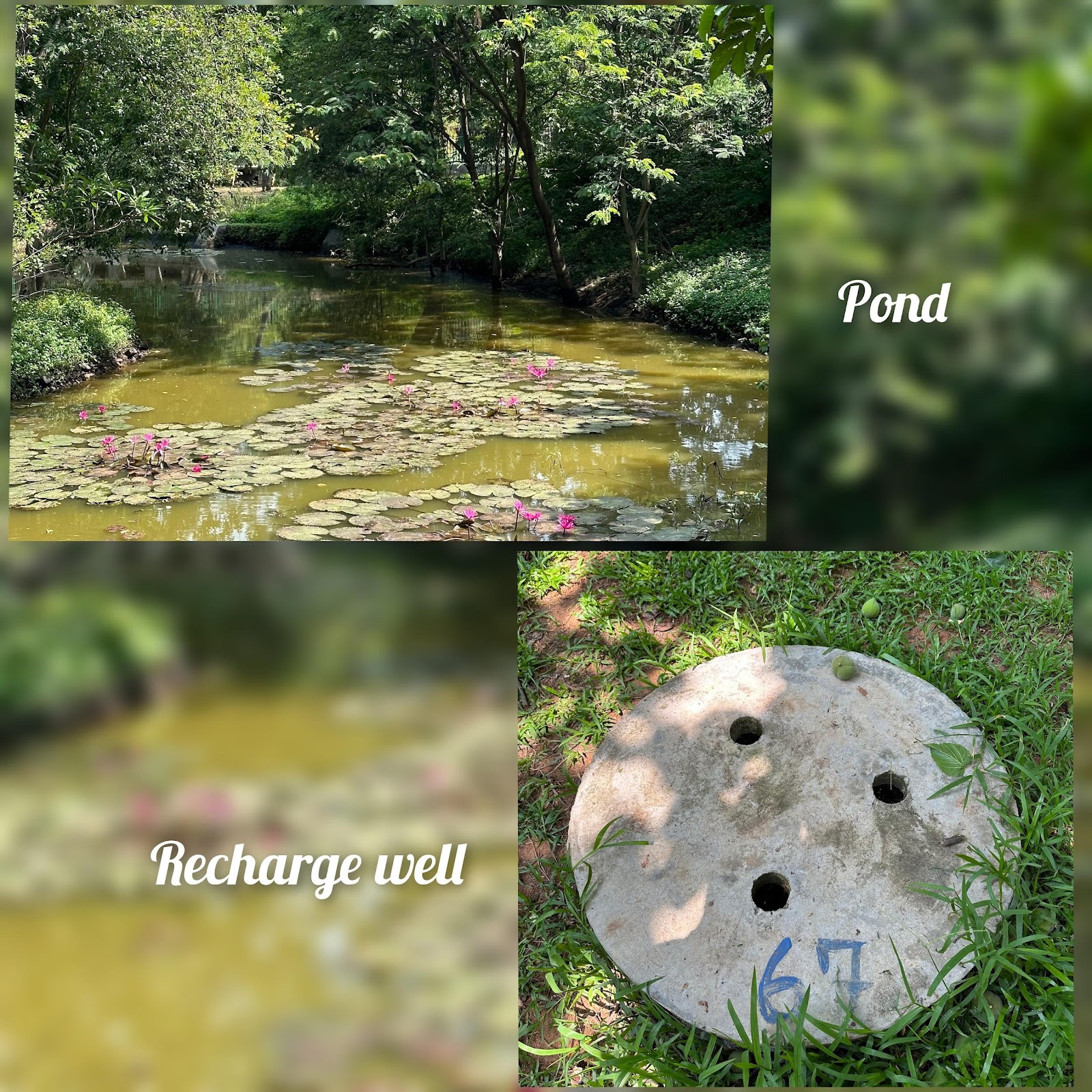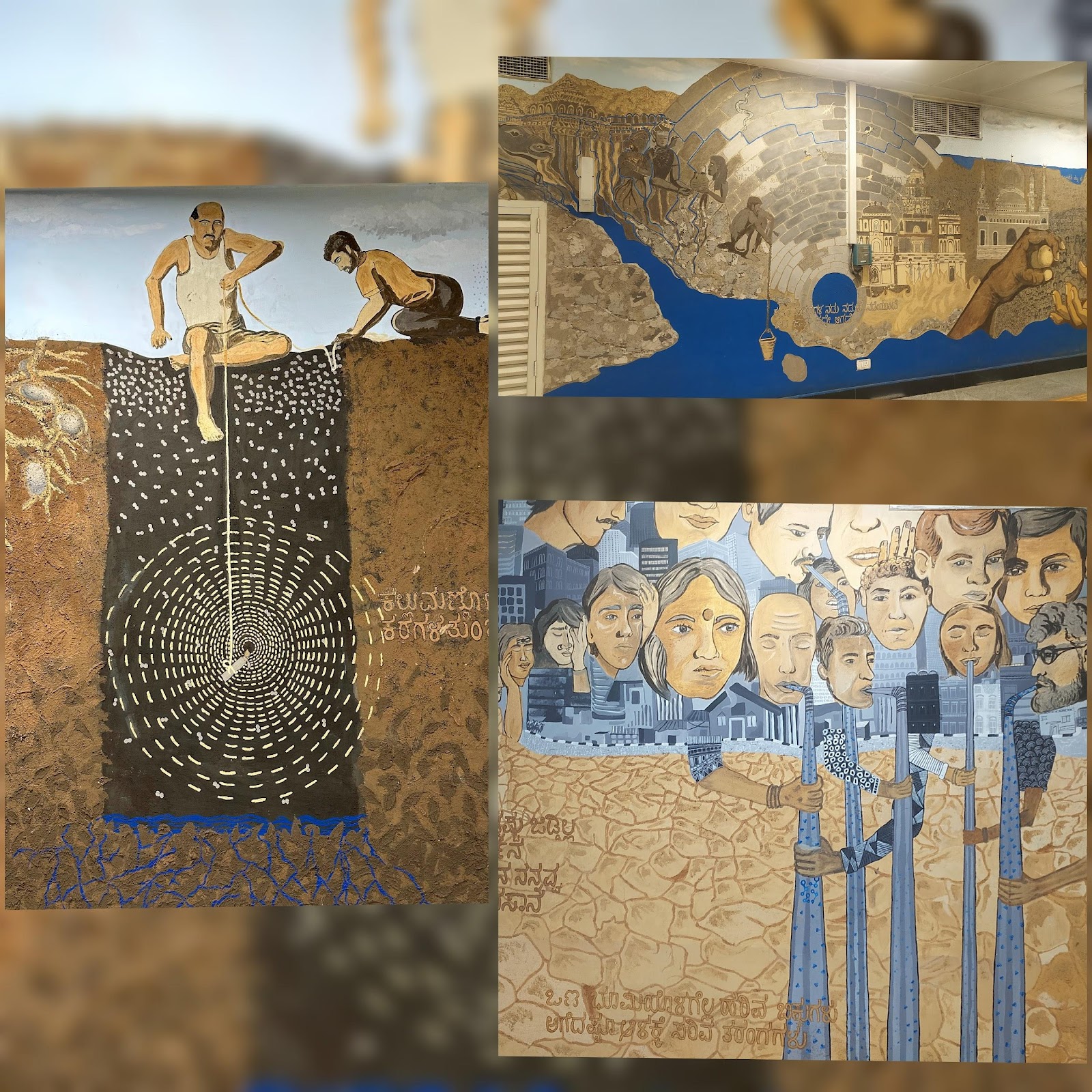Visit to Cubbon Park
19-05-2023, Friday
Our day started at around 8.30 AM at Gate 1 of Cubbon Park (also known as Sri Chamarajendra Udyanavana). Neelima and Ayushi were the guides for the day. Ayushi explained to us the geology of Bengaluru in general, the bed topology of the city, the river systems and the lakes in and around Bengaluru. We were surprised to know that Bengaluru hosted more than 1,000 lakes(man-made) in earlier days and now the number has been reduced to 100 to 150.
Geology of Bengaluru:
From the discussion and satellite images shown to us, we learnt basic geology of Bengaluru which can be summarized as follows:
- Bengaluru is surrounded by 5 valleys viz., HN valley, KC valley, Suvarnamukhi, Arkavati, and Vrushabhavathi. (BUDA Area = 1248 sq km)
- The highest point of the city is Doddabettahalli which lies on the central ridge.
- There are gentle slopes and valleys on either side of the ridge and the low lying area is marked by a series of water tanks.
- We learnt that these tanks are cascading lakes(inter-connected) which eventually join either river Arkavati(a tributary of Cauvery) on the west or river Dakshina Pinakini on the east.
- The city has, mostly Red Loamy clay soil and Laterite soil with granite - gneisses rock bed (Combination of Igneous and Metamorphic rocks)
We also learnt about Weathering processes and how they affect the life cycle of a rock.The theory part helped us understand the physical features with more clarity.
About Cubbon Park :
`Cubbon Park is a historic park located in the heart of Bangalore, the capital city Karnataka, India. It is one of the most iconic and cherished green spaces in the city, serving as a vital lung space amidst the bustling urban landscape. It is situated in the central administrative area of Bangalore. Cubbon Park spans over 300 acres (121 hectares) and is bordered by important landmarks such as Vidhana Soudha (the state legislative building), High Court of Karnataka, and the Government Museum.
We explored various sections of the park and following were our observations:
1.Wells:
Cubbon park has approximately 7 to 8 wells which are used for watering the trees alternatively. We measured the depth of the water and it was around 2.5m. The Water level was reduced (when compared to the previous data) due to summer.
It is noted that Open wells are easy to recharge and are a sustainable source of water (require low energy compared to bore wells). We also learnt that open wells help in flood mitigation.
Cubbon Park had several wells that served as a source of water for irrigation purposes. These wells were manually dug and provided local water supply for the park's plants and greenery. The water from the wells was likely drawn using hand pumps or other manual methods.
2. Kalyani:
We saw a Kalyani (also known as Step well) in the park. The Purpose of the Kalyani is to store the water and recharge the shallow aquifers around it. There was a recharge well at the center of the Kalyani as a source of water in the times of drought. Also, there were four canals directed out of the kalyani as water diverting mechanism in case of flood. So, it served the dual purpose of mitigating both drought and flood problems at the same place.
3. Depicting Social Life on Wells:
We observed one of the wells had a painting depicting a scene from the folk festival of Karnataka - Bengaluru Karaga which is celebrated in the month of March and April. In the scene, the priest at the center, an embodiment of Draupadi (strong ideal womanhood) carries a Karaga pot (floral jasmine pyramid) and people around him pray and dance for the well being of the community.
It was nice to see how culture and nature go hand in hand and people include wells as a part of their ritualistic celebrations. The water level at this well was approximately 4m.
4. Rock Mound:
We then arrived at the Rock mound at the park which is almost 4 billion years old. This rock was granite - gneiss that forms the basement of the entire city of Bengaluru. We could see fissures and weathering signs on it and over the time it has lost a lot of its layers terming the process as Onion Peeling, due to the action of temperature, pressure and other weathering activities. We also had a brief discussion about city planning based on the geology of a place.
6.Ponds and Recharge wells:
Cubbon Park also had ponds or small water bodies within its premises. These ponds played a crucial role in water conservation and acted as reservoirs for storing rainwater. They helped in maintaining the groundwater level in the park and provided a habitat for aquatic plants and animals.
There was also a rejuvenation project to save water at Cubbon park called the Cubbon park rejuvenation programme (CPR). As part of the programme, 6 wells were repaired and 73 recharge pits were built. The Horticulture Department carried out the initiative in collaboration with groups including Friends of Lakes, Biome Environmental Solutions, and India Cares Foundation.

6.Irrigation :
We observed the following methods of irrigation and water management systems being used in the park.
- For irrigation purposes, Sprinklers are commonly used to distribute water evenly over the park. Sprinklers are often connected to a network of underground pipes and controlled by a central irrigation controller.
- Another technique is drip irrigation that involves delivering water directly to the base of plants through a network of tubes with emitters. This system is more water-efficient than sprinklers and is used to irrigate flower beds, shrubs, and individual trees.
- Rainwater harvesting is also practiced to collect and store runoff water.These systems collect rainwater from roofs, roads, and other surfaces and store it in ponds or underground tanks.
Visit to Cubbon Park Metro Station:
We then went to Cubbon Park metro Station that has a large mural art at the entrance of the station. The mural illustrates Bengaluru's water history, including the tale of the well diggers. It was done using mud from 65 recharge wells dug in Cubbon Park.
It was completed under the direction of Srishti School of Art and Design, in partnership with Biome Environmental Trust. The Bangalore Sustainability Forum donated funds for this initiative.
The core of the artwork is Water. The artwork narrates Bengaluru's connections to open wells and the strain urbanization has put on water sources.
It tells about the story of six rivers originating from Nandi village , how well diggers used the techniques to estimate the levels of oxygen in the depth, how wells were dug, how they are being commercialized and its impact on the society.

It also talks about how people of different sections in the society have unequal access to water especially in urban areas.The paintings gave us thoughtful insights on the current water problems of urban belts. That ended our half day tour to the Cubbon Park - famously known as the Lungs of Bengaluru city.
No comments:
Post a Comment